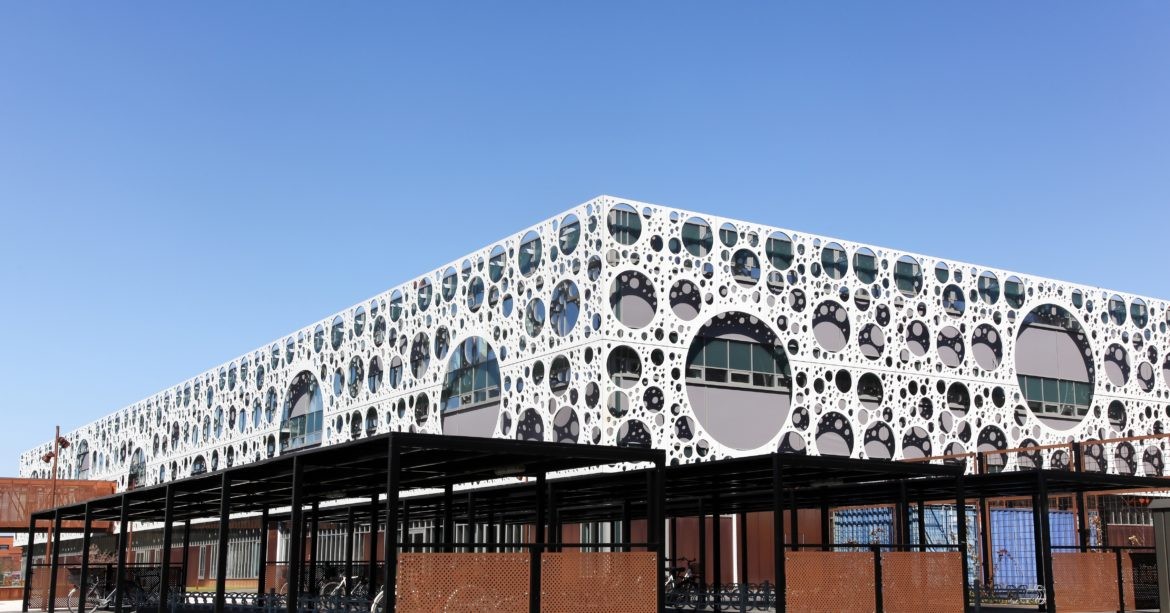School Architecture of the Future
The issue that many of today’s schools have is that they were designed for a different time. The rows of seats facing the front of the classroom were used when there was less focus on creativity and individuality in learning.
For this reason, designers need to re-think the use of spaces within schools. This has led to an increased emphasis on Innovative Learning Environments.
Key points
- Evidence has found that the design of the educational environment has a direct impact on the performance of students
- Bosch schools combine innovative classroom design, and good space design, to create 21st century schools
- Technology integration and learning from the environment are important considerations in design
Need a Quote?
The Entegra Signature COLA features Ridgeback Technology
for greater comfort and safety
RECOMMENDED ARTICLE
What Will Schools Look Like in the Future? – Entegra Signature Structures
The trend towards Innovative Learning Environments
Today, when primary schools or middle school and high school buildings are built, or renovated, architects and designers create Innovative Learning Environments (ILEs). These environments are designed to create the best learning experiences for today’s students as they promote effective learning..
They also take education into a more productive and creative future. With this in mind, ILEs are more open and flexible spaces than traditional classrooms. Reports like this one based on evidence from New Zealand show just how important ILEs are to the future of education.
This is because the design of the educational environment has a direct impact on the performance of students. For example,, the results of this study discussed by Science Direct show how things such as naturalness, stimulation and individuality are all important in school design and its effect on educational development.
Given this evidence, any architecture firm or designer creating school spaces for the future needs to use an inside-out approach to education architecture.. This means that the needs of students and teachers are central to the design. There are some parts of school design that are central to this.
Essential aspects of innovative school architecture and design
The features of a school that is designed to support the future of education involve the indoor and the outdoor space.
Creative indoor landscapes
Rosan Bosch is one of the most famous names in the creation of school interiors of the future. Her schools feature stimulating colours in their classroom decor and create inspiring learning areas that provide a link between learning and leisure. This means that Bosch schools combine innovative classroom design, and good space design, to create 21st century schools that allow modern learning activities.
Looking back to the study mentioned earlier in this article, Bosch architecture has the ideal balance of naturalness, stimulation and individuality to promote great learning experiences.
Innovative outdoor spaces
Creating natural learning spaces of the future should make the most of outdoor space as part of a healthy design. The Hyllievång School in Malmö, Sweden, is a good example of this.
The schoolyard is split into areas where students can play on swings, play football and other sports and run on a track. There are also quiet areas where students can spend time relaxing and reflecting.
The roof spaces of the school are also used. They act as outdoor classrooms where students can get the full benefit of natural light as they learn.
Features of creative school architecture for the school of the future
Given that learning spaces for the future should include indoor and outdoor space, there are some features that should be part of designs.
- Learning from the natural environment.
This could include developing a wetland area in the outside space. Some schools may even include gardens or farmland where students can learn important environmental lessons.
- Building structures that are environmentally friendly.
Many young people are already environmentally aware. This awareness is supported and encouraged by the creation of school structures that are environmentally friendly. This includes features that make use of natural light or solar power.
Integrating technology into everyday life
Technology is central to life today and will continue to develop in the future. For this reason, things like Cloud technology and interactive whiteboards have to be included in the design of school spaces.
Overall, future school architecture is all about creating ILEs that are centred on the needs of students and teachers.
With this in mind, future learning spaces in schools will link with the natural environment and technology. They will be flexible and colourful spaces that facilitate creativity and individuality.
Today’s architects and designers, like Rosan Bosch have already started on the journey to creating these future school spaces. It will be interesting to see what happens next.
For more information
2 - 2Shares

